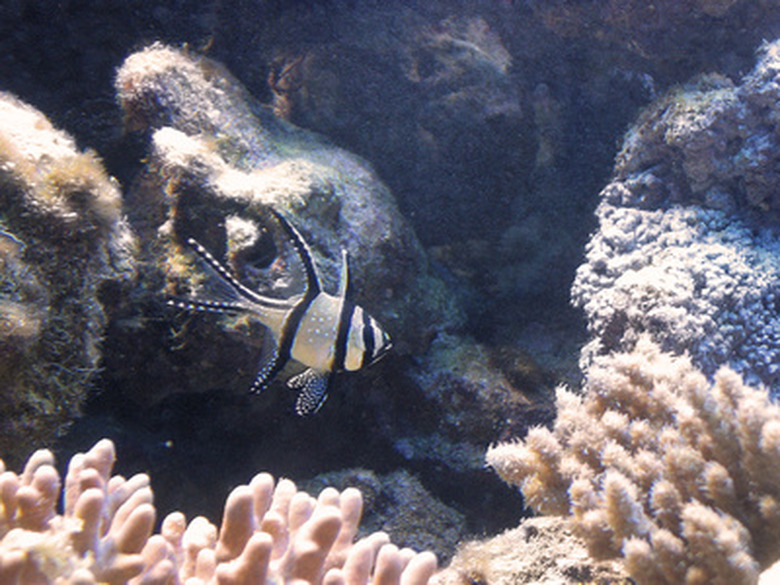List Of Minerals Found Under The Sea Bed
The sea bed, also known as the ocean floor, is composed of different minerals than what is found in the uppermost section of earth's surface. The ocean floor itself is made of mafic rocks, the crystallized matter from silicate magma. The seabed is also home to Volcanic Massive Sulfide deposits, which are rich in ore that can be mined for its resources. Minerals found under the seabed include gabbro, basalt, serpentine, peridotite, olivine and ore minerals from VMS.
Gabbro
Gabbro
Gabbro is usually dark in color — black or gray — and is a coarse-grained igneous rock that makes up most of the seabed. According to Live Science, gabbro is a "dense type of rock formed from the slow cooling of magma chambers beneath mid-ocean ridges." It is broken up and used in railroads, road material and can be polished to be sold as black granite.
Basalt
Basalt
Very similar to gabbro in its chemical composition, basalt also makes up much of the seabed. It is most often black in color. Basalt is the most extrusive igneous rock, according to C.R. Nave of Georgia State University. It composes several land forms, including Hawaii, Iceland and large portions of Oregon and Washington. Its uses include construction material, flooring and sculpting.
Serpentine
Serpentine
Serpentine is usually green in color, but can also be yellow, black or brown. It is an alteration form of the mineral olivine. Antigorite, clinochrysotile, lizardite, orthochrysotile and parachrysotile are all in the same family as they have a similar chemical makeup. It is used as a substitute for jade and can be used for carving.
Peridotite
Peridotite
Peridotite is textured with black, gray and white coloring. It is a dense, intrusive igneous rock that is rich in magnesium and iron. It primarily contains olivine in its composition, another mineral found under seabeds. It is found as layers, crystals and fragmented blocks. It is named after the gemstone peridot. According to Science Daily, it is also used to capture and store carbon dioxide.
Olivine
Olivine
Olivine is brownish-green to dark or olive green in color. It is commonly found in basalt, gabbro and peridotite. It is a silicate mineral, which are common rock formers. Olivine becomes unstable when it reaches the earth's surface and alters to serpentine. It is used in jewelry, as peridot, when mixed with peridotite.
Volcanic Massive Sulfides
Volcanic Massive Sulfides
Volcanic Massive Sulfides, or VMS, are deposits created by black smokers which allow release of magmatic water through vents on the ocean floor. Interaction between the hot, magmatic water and the cold ocean water cause precipitation of minerals.
References
- "Introduction to Ore-Forming"; Laurence Robb; 2005
- Oceanus: Unraveling the Tapestry of Ocean Crust
- Hyperphysics: Basalt and Gabbro
- Live Science; Scientists Find the Elusive Gabbro
- Mineral Gallery: The Mineral Serpentine
- Science Daily: Rocks Could Be Harnessed To Sponge Vast Amounts of Carbon Dioxide From Air
Cite This Article
MLA
Childers, Krista Lee. "List Of Minerals Found Under The Sea Bed" sciencing.com, https://www.sciencing.com/list-found-under-sea-bed-7878220/. 24 April 2017.
APA
Childers, Krista Lee. (2017, April 24). List Of Minerals Found Under The Sea Bed. sciencing.com. Retrieved from https://www.sciencing.com/list-found-under-sea-bed-7878220/
Chicago
Childers, Krista Lee. List Of Minerals Found Under The Sea Bed last modified March 24, 2022. https://www.sciencing.com/list-found-under-sea-bed-7878220/
